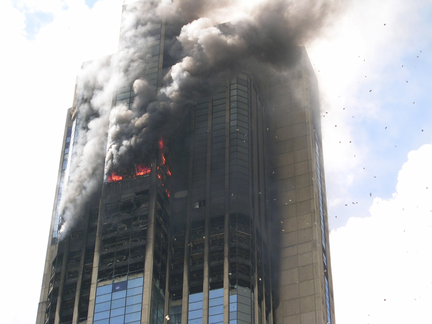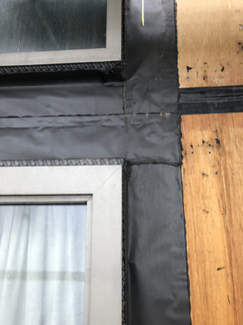A ‘Belt & Braces’ Approach to New Fire Regulations
The value of illbruck ME010 Façade UV & Fire Membrane in delivering complete assurance!

Changes to the Building Regulations and guidance in Approved Document B (ADB) have resulted in some difficulty and ambiguity in interpreting which materials are suitable for relevant buildings over 18 metres in height.
Steve Wild, Technical Consultant at Tremco Construction Products Group (CPG) – which includes the illbruck brand of sealing and bonding products for windows, façades, interiors and exteriors – explores the main issues and explains the key factors to achieve a safe, robust specification process.
Under the new Building Regulations Approved Document B, membranes used as part of the external wall construction above ground level should now achieve a minimum of Class B-s3, d0 to EN13501-1 ‘Fire classification of construction products and building elements. Classification using test data from reaction to fire tests.’
The European Reaction to Fire classification (Euroclass) system is the common EU standard for assessing the qualities of building materials when subject to fire.
The system determines a product’s fire performance by measuring a comprehensive set of characteristics, including ignitability, flame spread, heat release, smoke production and tendency for producing flaming droplets/particles.
According to the European standard EN 13501-1, products will be classified in one of the seven primary classes from A1 to F according to their level of combustibility, as well as possibly belonging to additional classes according to the amount of smoke developed (s1,s2 or s3) or the amount of burning droplets or particles (d0,d1 or d2).
In order to assess the appropriate classification, a product must be tested in accordance with EN 13823 (known as a ‘single burning item’ test).
‘Reaction to fire’ evaluates specific materials’ behaviour and contribution to fire, whereas ‘resistance to fire’ assesses a product or system’s ability to resist the penetration through the product or system and prevent a temperature rise between the exposed and unexposed sides in a fully developed fire situation.
This is more commonly declared as a fire rating. The two approaches should not be confused.

Additional benefits
As well as meeting the reaction to fire classification, ME010 fulfils other criteria of significance to specification professionals, particularly with regard to performance capabilities.
- It is primarily a breather membrane – used either as a full façade application or in narrower widths as a window perimeter interface seal.
- The weather performance is W1 to EN1928 (before and after ageing).
- It is also airtight and permanently UV stable – all independently assessed.
ME010 and SP025 are currently under assessment by BBA in order to further prove their performance. This is an important attribute when considering durability.
Measuring up
Questions of compatibility should also be asked as part of the specification process.
One area of note is that, whilst EPDM membranes have been widely favored for many years for air and weathertight applications, in the context of fire, they are non- compliant with ADB, being Class E to EN13501-1. They are also not vapour permeable, so not suitable for a breather membrane application.
Questions should also be raised as to whether a breather membrane, which meets the Class B requirement, has also achieved the W1 water tightness level to EN1928 and the appropriate vapour resistance. which should be < 0.6MNs/g.
To conclude, where safety counts and system performance, specifiers can be assured that the selection of ME010 provides a fully compliant breather membrane solution meeting EN13501-1 Class B-s1, d0, d0 when tested as a system with proprietary adhesive - and also meets W1 water resistance, permanent UV stability and the correct vapour permeability criteria.
More information can be found in our Approved Document B 2019 Fire Safety.











